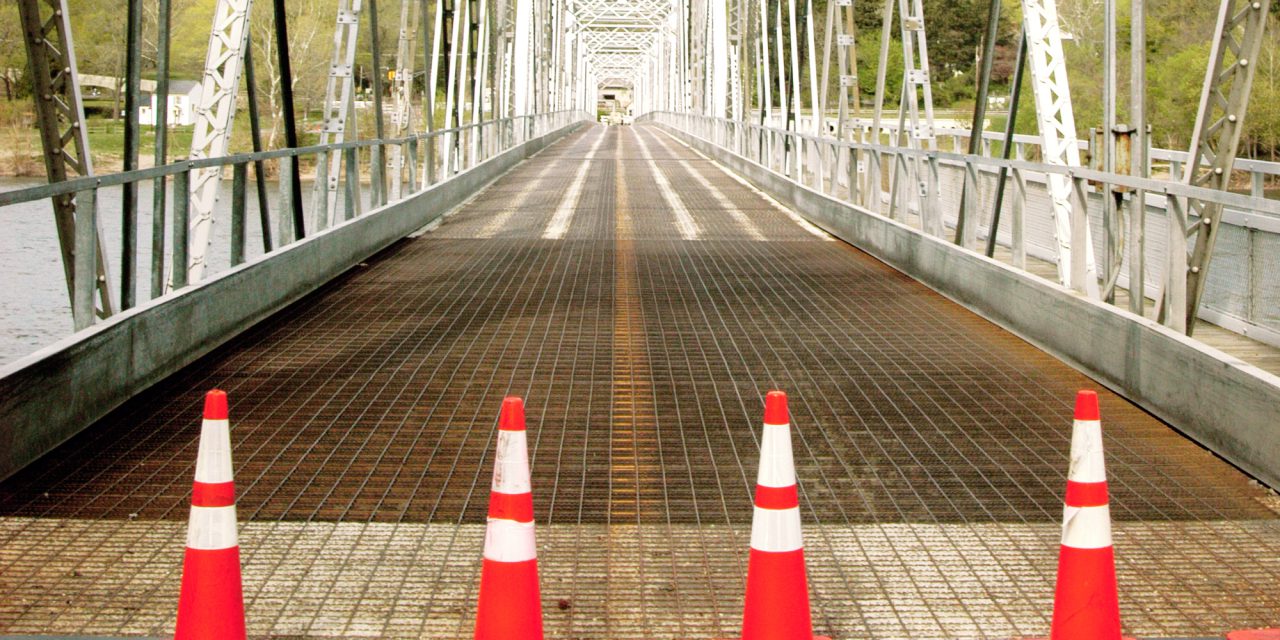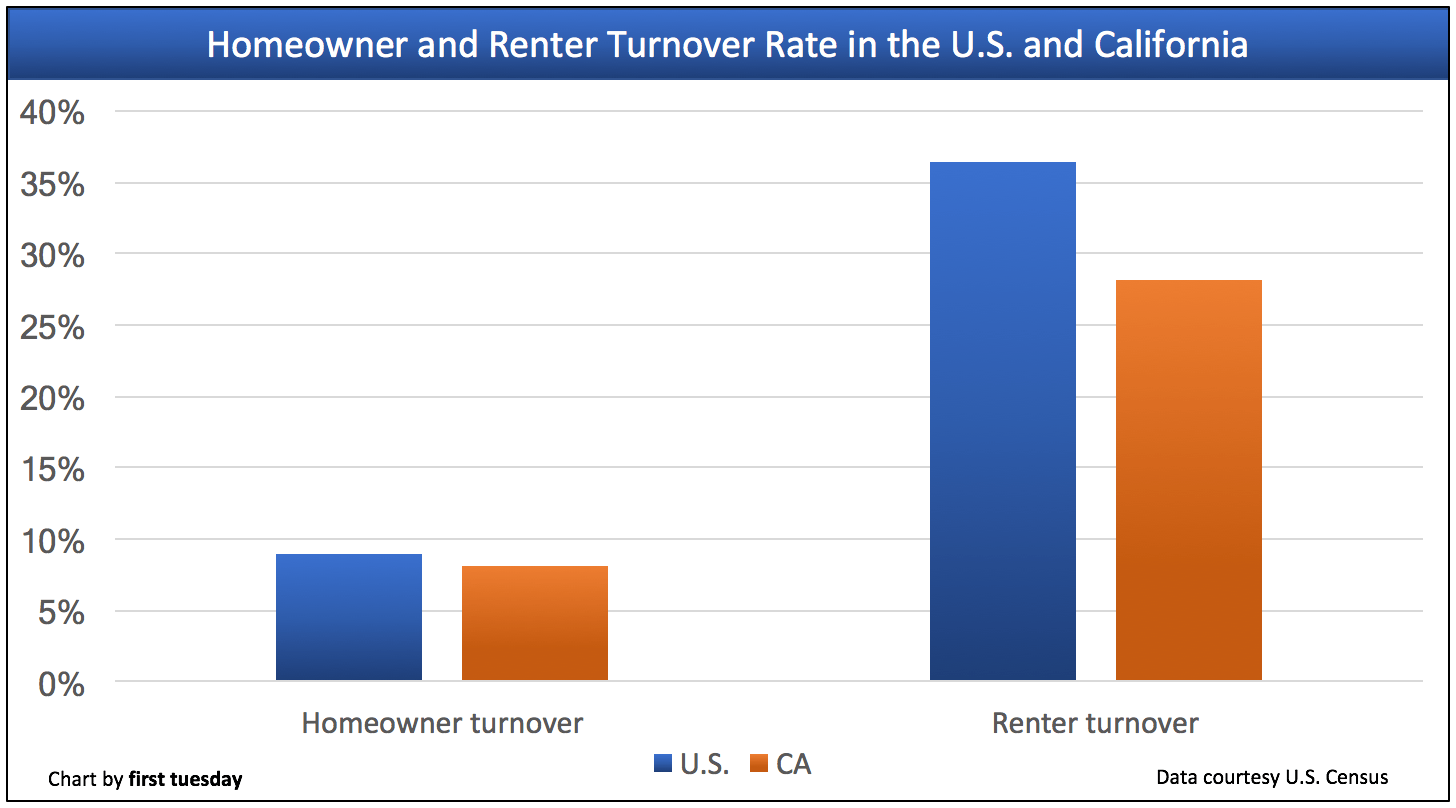In 2017, just 10.9% of households changed residences. This is the lowest mobility rate since the U.S. Census started reporting this figure in the 1960s, according to Trulia.
Why is mobility so low?
We can’t blame any single group for today’s low mobility rate. Moving is down across all age groups, from the Millennials new in their careers to Baby Boomers now preparing for retirement.
Here in California, the mobility rate — sometimes called turnover — is even lower.
| U.S. | California | |
| Homeowner turnover | 8.9% | 8.1% |
| Renter turnover | 36.4% | 28.2% |
The chart above breaks down the turnover rate by renters and homeowners. In 2016, a smaller share of homeowners and renters moved in California than the national average.
Editor’s note — The turnover rate is slightly different from the mobility rate reported by Trulia. The mobility rate represents households, while the turnover rate is relative to the full population.
When zooming in across California’s diverse geographical regions, the trend revealed is a higher turnover rate in suburban areas, and lower in urban areas. In all areas of the state, the trend has been down since peaking in 2009-2011, when moving was a common result of the job losses during the recession (not to mention, given a boost by the 2009 tax stimulus to encourage homebuying). However, turnover everywhere has fallen well below pre-recession levels.
Why low turnover is a problem
For housing professionals, turnover is essential for home sales to occur, and a living to be earned. But turnover has plummeted, evidenced by the statewide stagnation in home sales volume.
The reason? Homeowners and renters presently lack the financial ability to purchase.
Renters are burdened by high rents, which are regularly over the recommended 31% share of renter income, often exceeding 50% or more of their income. Unable to save for a down payment, fewer renters are able to become homeowners, holding down the state’s homeownership rate.
Further, current homeowners are cautious about listing in today’s low inventory environment, nervous about their ability to find an appropriate replacement home. The result is a dwindling supply and rapidly rising home prices.
The solution to boost turnover is ultimately to build more housing. But getting there is more complicated than builders alone can solve.
Builders are being held back by restrictive zoning laws that prohibit density in the most desirable, costly areas. Not-in-my-backyard (NIMBY) advocates encourage these laws, and the cycle continues.
Some progress is being made on this issue, as legislative changes are in the works to make the permitting process easier for builders of low- and mid-tier housing. This will result in an increase in residential construction in 2018 and the coming years. Along with a boost from the improving jobs market, this will improve turnover rates as we head into the next peak in home sales, expected around 2020-2021.
Related article:
















Another common hindrance to homeowner turnover is when homeowners realize how much more they will be paying in property taxes if they purchase a new home. They could have a much higher property tax bill for their new purchase even for a lower or similarly valued home depending on when and how much they purchased their existing home for.